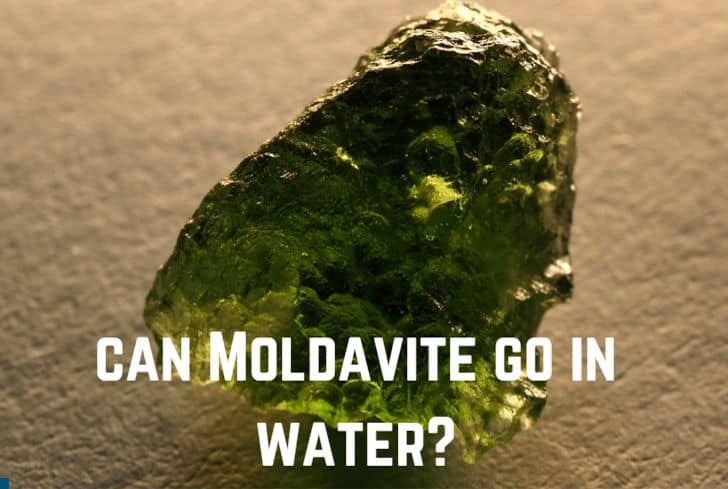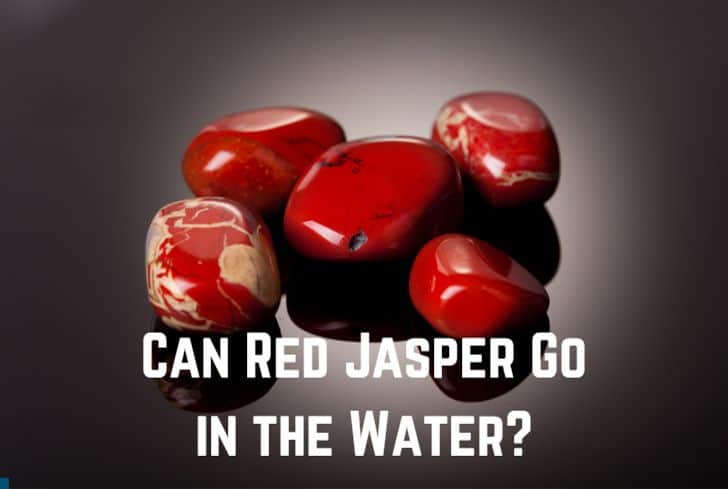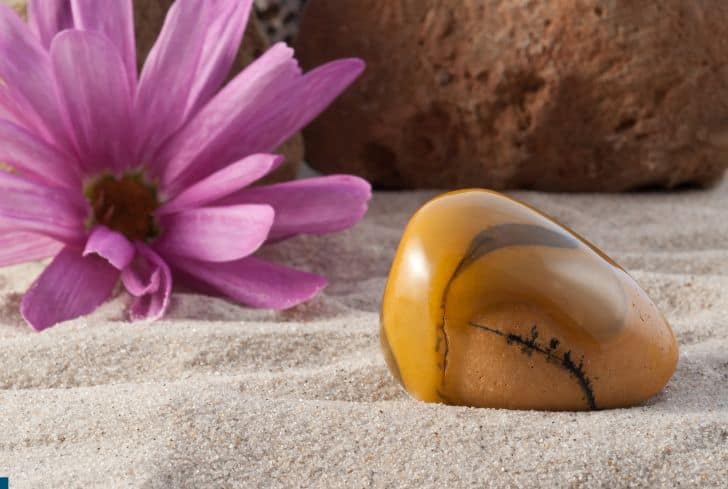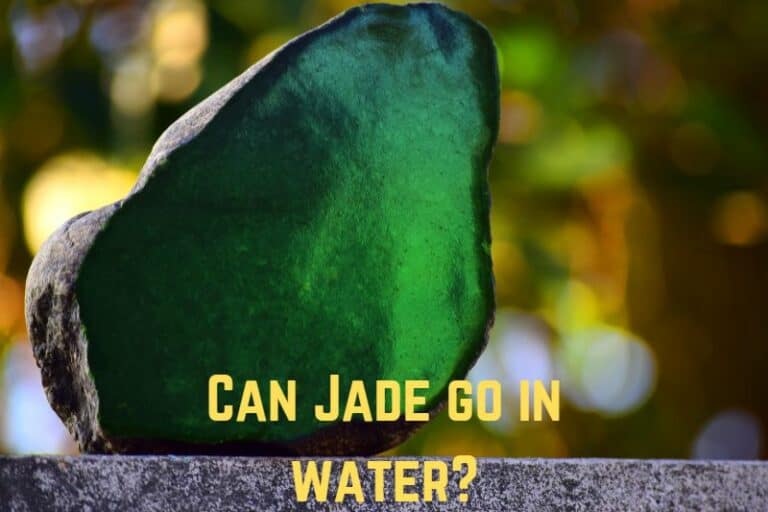Jasper vs Chert (Detailed Comparison)

Jasper is a kind of cryptocrystalline quartz. It is an opaque, impure variety of silica (silicon dioxide, SiO2), and is usually red due to iron impurities. Chert is also a kind of cryptocrystalline quartz, which occurs as a hard, fine-grained sedimentary rock.
The terms “jasper” and “chert” are often confused. To make matters worse, the word “flint” is also sometimes used. All three of these refer to specimens of cryptocrystalline quartz. A single specimen can be referred to by different names, depending on who is talking about them.
In this article, we will learn the differences between jasper and chert.
Read: Carnelian vs Red Jasper (Full Comparison)
What is Jasper?
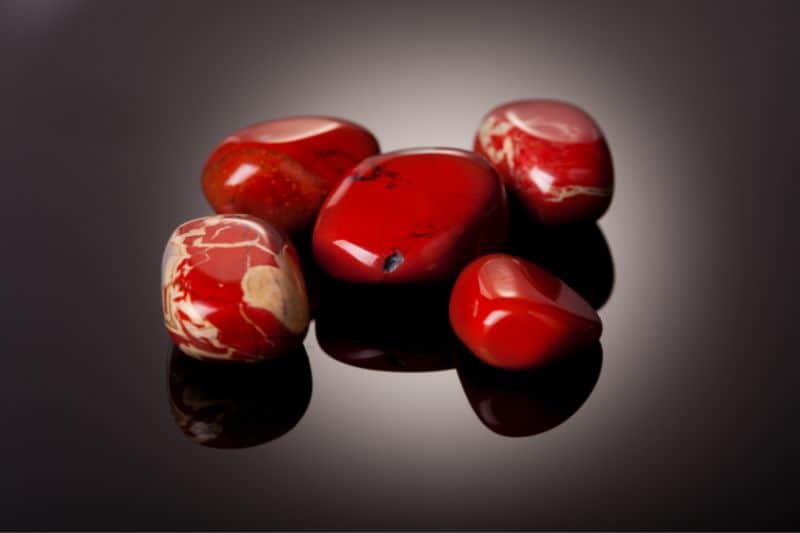
Jasper is made up of microgranular quartz and/or cryptocrystalline chalcedony (a form of silica). It is usually red, yellow, brown, or green; rarely, it can be blue. It is widely used as a gemstone, ornament, and spiritual stone.
The name “jasper” comes from the Old French term jaspre, which means a “spotted or speckled stone”. Jasper was first used in the 4th and 5th millennium BC to make bow drills in Mehrgarh. It was one of the favorite gems in the ancient world, cherished from Arabia to Greece.
The jasper of antiquity was distinctively green and was often compared to emerald. Today, we only associate jasper with opaque stones, but back then, translucent stones (like nephrite) were also called jasper. We would now classify them as chalcedony.
What is Chert?

Chert is a hard, fine-grained sedimentary rock made up of microcrystalline or cryptocrystalline quartz (which is the mineral form of silicon dioxide, SiO2).
Chert is typically of biological origin, and it is created by introducing dead sea life during its formation. However, it can also occur inorganically as a chemical precipitate or as a diagenetic replacement (such as in petrified wood).
Usually, it is made up of petrified remains of siliceous ooze; this is the biogenic sediment that covers the ocean floors, containing silicon skeletal remains of various living organisms (diatoms, silicoflagellates, and radiolarians).
Besides microfossils, chert can also sometimes contain macrofossils (plant fossils that are large enough to be seen by the naked eye), although some may have no fossils at all.
Similarities Between Jasper & Chert
Jasper and chert are similar in the following ways:
- Microcrystalline Quartz: Both jasper and chert are made up of quartz. However, their chemical composition can differ depending on their geological formation and the impurities. They also have a microcrystalline composition, meaning that their grains are very fine and not visible to the naked eye. This also gives them a smooth appearance.
- Sedimentary Origin: Both jasper and chert come out of sedimentary environments. They are typically formed by the accumulation and compaction of silica-rich materials under specific conditions.
- Hardness: Jasper and chert are relatively hard and durable rocks. This is why they have historically been used for a variety of purposes, including toolmaking and ornaments.
Differences Between Jasper & Chert
Etymological: Jasper, Chert, Flint
It is also important to understand that some differences between jasper and chert are merely etymological: different people may use different terms for the same specimen.
So, “jasper” is a term that is primarily used by gemologists, rather than geologists. Gemologists use it to refer to excellent pieces of opaque microcrystalline quartz that can be used for making cabochons, spheres, tumbled stones, etc.
They value the stone primarily for its beautiful appearance, ability to be accurately cut, and how brightly it can be polished.
“Chert”, on the other hand”, is a term that is primarily used by geologists. The geologic occurrence of the stone also plays a role here. Geologists will likely call it chert if the material makes up a sedimentary rock that can be traced from one geographic location to another.
Finally, there is a third term, “flint”. Historians and archaeologists primarily use this to refer to stones that have historically been used for making weapons or tools. These usually have very fine grain size, so they break with higher predictability & create sharper edges.
Chemical Composition
Jasper and chert are both forms of cryptocrystalline quartz. However, they are formed in different ways.
Jasper is formed from volcanic ash or sediment undergoing significant heat and pressure. During this process, impurities like clay and organic material get trapped within the silica-rich solution and cause the stone to become opaque.
On the other hand, Chert is typically formed by the chemical precipitation of silica (silicon dioxide) from groundwater or hydrothermal fluids. This often replaces pre-existing organic material, such as shells. Chert is often found within sedimentary rocks like limestone.
Color
Both stones occur in a wide range of colors.
Jasper is usually red, yellow, brown, or green; in rare cases, it can also be blue. The most common color is red due to iron inclusions present in the stone. Due to its ability to be highly polished, jasper is popular for making vases, snuff boxes, and seals.
Chert occurs in a large variety of colors, ranging from white to black. However, its most common variants are gray, brown, grayish brown, and light green to rusty red. Occasionally, it can also be dark green.
These colors are caused by the trace elements in the stone: the red and green are associated with traces of iron in oxidized and reduced forms respectively.
Hardness
Both jasper and chert are relatively hard minerals.
The Mohs Hardness Scale determines a mineral’s hardness by measuring its scratch resistance against other minerals. It also indicates whether a mineral can survive underwater or not.
Both jasper and chert have a value of about 6.5 to 7.0 on the Mohs Hardness Scale. This means they are quite hard and durable, making them ideal for jewelry. They are also safe underwater.
Clarity and Pattern
Jasper is opaque while chert may be translucent.
Jasper is always opaque due to its microcrystalline structure. Chert, however, can be opaque or translucent. This is because of the variations in the size and distribution of microcrystals.
Jasper is known for its beautiful patterns. Often, it exhibits banded formations that swirl in unique ways. Chert, however, usually lacks such patterns. Even if the patterns exist, they are quite muted.
Metaphysical Properties
Both stones are valued for their metaphysical properties.
Jasper is considered a powerful healing stone. It is believed to give a sense of well-being by promoting gentleness and relaxation. Jasper also helps people focus on the here and the now. Red Jasper is deeply associated with the Aries zodiac sign.
Chert, on the other hand, is often associated with Leo. It is believed to have a calming influence. Being a stone of protection and healing, it helps its users to find serenity and improves their sleep.
Location
Jasper and Chert are found in various locations around the planet.
On the other hand, Jasper has deposits in the United States (particularly in Arizona and Wyoming), Germany, and Australia.
Certain variants are specific to some locations. These often influence the name of the variant as well. For example, Morrisonite is a type of jasper that comes from Oregon (USA), named after James Morrison whose ranch was the source of the mineral.
Chert, on the other hand, is found in the USA (especially the Flint Hills region in Kansas), England, Oman, etc. Check out this video by “Virtual Field Trips” to see where chert comes from.
Care
Since both jasper and chert have a value of over 5.0 on the Mohs Hardness Scale, they can be cleaned using water. Follow these steps to clean them:
- Mix a soft detergent/soap with lukewarm water.
- Immerse the jasper/chert in the solution for a few minutes, scrubbing it with a soft brush.
- Rinse the stone under running water to get rid of all the soap.
- Let it air dry. Make sure you twist it a few times to remove all water from the crevices.
Both have a value of around 6.5-7 on the Mohs Hardness Scale. Because of their good hardness, they are ideal for use in jewelry and are quite easy to take care of. However, it would be best if you did not use abrasive cleaners or harsh scouring pads containing bleach on it.
Read: Labradorite vs Moonstone (Detailed Comparison)
Uses of Jasper and Chert
These are the uses of jasper:
- Gemstone: Jasper’s hardness and its ability to take an excellent polish make it a good choice for all types of jewelry. It is also easy to take care of, as we will learn later in this article.
- Spiritual: Like many crystals, jasper is valued for its healing properties. It is considered a supreme nurturer that helps its owners with balance, stamina, and courage. It is also known as a stone of endurance.
- Ornament: Besides jewelry, jasper is also used in various ornaments. It is cut into cabochons, tumbled stones, and other lapidary projects. It also makes other decorative objects such as ashtrays or bookends.
Chert is also used for the above-mentioned purposes. It is also great for:
- Tool-Making: Historically, chert has been used as a raw material for the construction of stone tools. When struck against an iron-bearing surface, chert also causes sparks, which makes it great for starting a fire. It was often used in tinderboxes.
Conclusion
Both jasper and chert are types of quartz, which are widely used for jewelry and other purposes. However, they also differ in several ways, such as their formation, color, etc. We also learned about their uses and how to take care of them.

